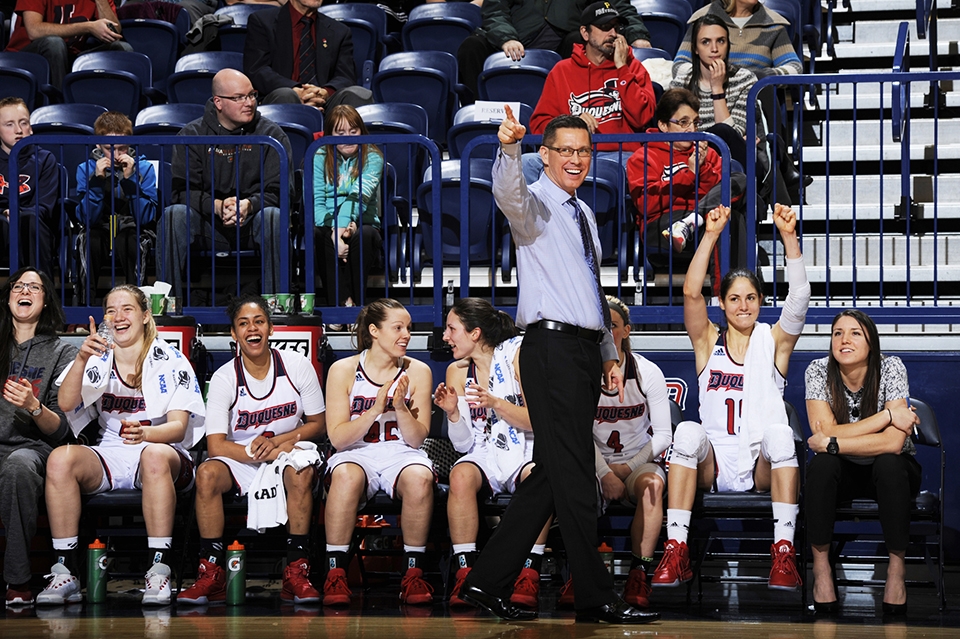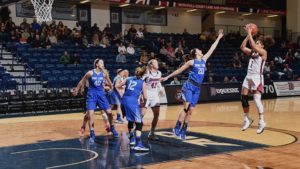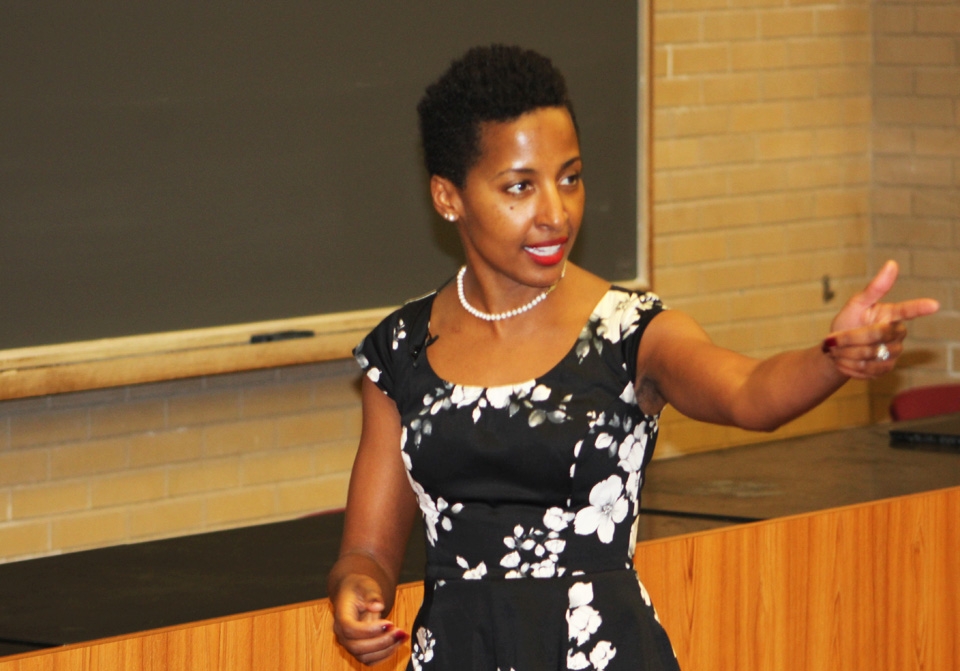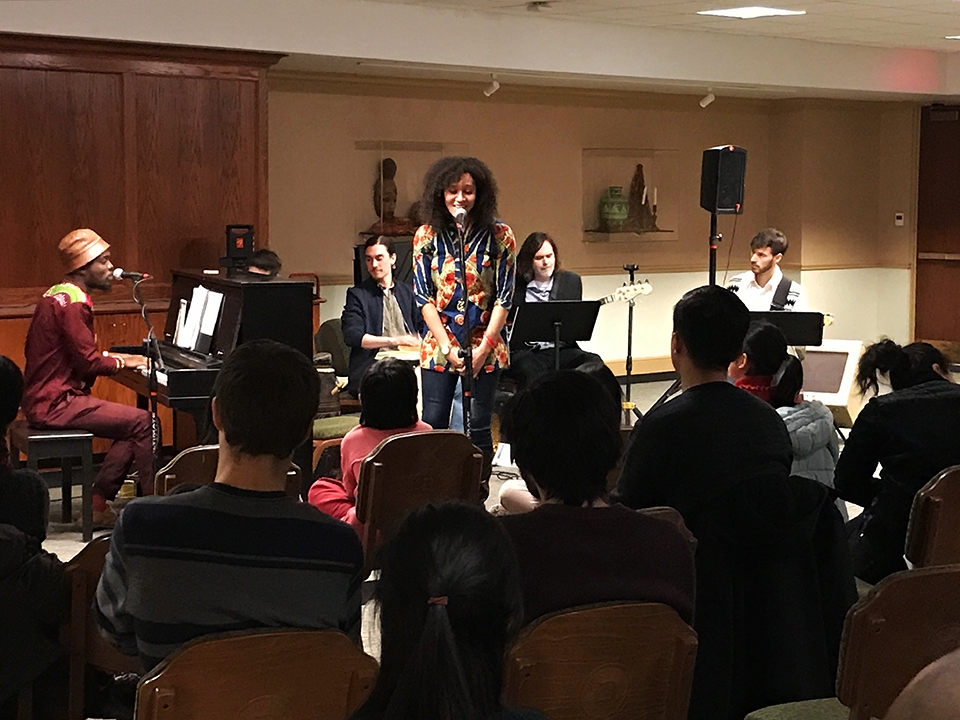

David Borne | Staff Writer
09/27/2018
Heading into what was supposed to have been her sophomore season in 2017, Duquesne women’s basketball guard Nina Aho turned heads during training sessions. In fact, Aho looked so comfortable on the court that head coach Dan Burt admits she was in line to earn a starting role.
But, just weeks away from the team’s season opener, the injury bug bit. During a conditioning session, Aho twisted her knee. Having torn her ACL during her final year of high school, Aho is no stranger to serious knee injuries, but this didn’t seem like one. So, with no major pain or signs of something significant, she didn’t think much of it, and continued to practice.
It wasn’t until a few days later when Aho realized something was very wrong. She woke up from a nap completely unable to walk. The team’s medical staff sent her to get an MRI, and determined that she suffered a torn meniscus. The injury sidelined her for a significant period of time, and she red-shirted the 2017-18 season.
Having been through a long recovery process before, Aho knew the road ahead of her would come with plenty of difficulties along the way — the biggest of which was not being able to contribute on the court to help her teammates win games.
“I’ve had two surgeries on the same knee, so I’ve had to come back twice. It’s really tough to sit on the outside and watch [the team] play. It’s really tough to not be able to help them, especially when the time comes,” Aho said.
“You have to figure out other ways to help them,” Aho continued. “It was obviously a really bad experience, but at the same time it made me realize a lot of things about my teammates, myself, and how to work around it and help my teammates out in different ways.”
It’s a process Aho describes as “very frustrating,” and one that comes with good days and bad. The biggest key for Aho, though, is patience.
“You have to be really patient when you go through it,” Aho said. “You reach a step and think ‘I’m done with this, I can do more,’ but you really can’t. You think you can, but it’s really hard. Back to practicing, it’s hard. My reflexes are not as quick as they used to be. I’m a little afraid of contact, obviously. It’s all going to come back; I just need to get started.”
As is usually the case for players sidelined by injury, an entire year out of game action helped Aho’s basketball IQ tremendously. She got to look at the game from a new perspective, and learned from her time on the sidelines.
“Sitting out and watching the games gave me a little bit of knowledge, too. I can see the team and the court better.”
Burt expects Aho to be back at 100 percent by the season opener, but the coaching staff will monitor her workload in practice. She may see an occasional off day, just to make sure her knee is not overworked.
When fully healthy, Aho brings a much different style of play to Duquesne’s rotation than other guards on the team’s roster. She’s a facilitator, with an offensive game focused less around scoring. Burt compared her skill set to that of Hall of Fame point guard, Jason Kidd.
“She’s a play-maker. Her athleticism allows her to get into the lane. She’s really good at driving, getting into the lane, and kicking,” Burt said. “She’s big, she’s strong, she can get by people, and she shoots the three well enough that you must guard her at the line. She gives us the ability to be a play-maker, and last year we only really had Libby [Bazelak] who was a true play-maker.”
Aho’s play-making ability is huge for the team, especially given the weapons that surround her. With sharpshooters Chassidy Omogrosso and Julijana Vojinovic to play alongside, Aho’s shot-creating ability adds a whole new dimension to Duquesne’s high powered attack.
“If you go with Nina, and have [Omogrosso] on one wing, with possibly [Vojinovic] on the other wing, you have the two best three-point shooters in the league with a kid at point guard who is bigger, stronger, and athletic, and can get into the lane on people. When she gets into the lane, that sucks people in and she’s really good at kicking out, and you have the two best three point shooters, that’s a pretty darn good thing,” Burt said.
The women’s basketball team begins its official practice schedule on Sept. 27. With the regular season still a ways away, Coach Burt isn’t ready to establish definitive roles quite yet. Duquesne is loaded with depth at the guard position, as Omogrosso, Vojinovic and Conor Richardson all figure to see significant minutes on the perimeter.
As for Aho, she will compete directly with sophomores Bazelak and Amanda Kalin for playing time. Both Kalin and Bazelak put together stellar freshman campaigns, and have continued to develop their games further. The return of Aho now allows Coach Burt and the Dukes to get very creative with potential lineups, as well.
So, whether she is on the court setting up teammates or supporting them on the sideline, Aho will be a major contributor for Duquesne this season, one way or the other.
Burt’s team will begin its 2018-19 season on Nov. 6 at TCU before facing Texas on Nov. 8 in Austin. The Longhorns finished last season ranked no. 8 in the AP poll.
The Dukes will return home to the A.J. Palumbo Center on Nov. 12 to face Mount St. Mary’s.




